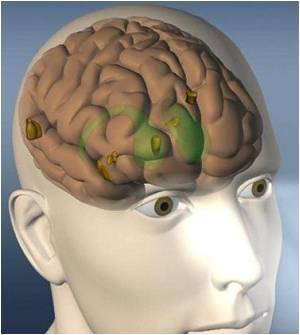New studies show that a brain pacemaker called deep brain stimulation (DBS) is successful in treating Parkinson's disease.

"Both targets in the brain are viable for improving motor function. This is great news for patients," said Frances Weaver, PhD, of Edward Hines Jr. VA Hospital and Loyola University Health System. Weaver, one of the study's lead investigators, is a professor and director of the Program in Health Research at Loyola University Chicago Stritch School of Medicine and director of the Center for Management of Complex Chronic Care at Hines VA Hospital.
DBS is not a cure, and it does not stop the disease from progressing, but can significantly improve symptoms, especially tremors and can also reduce rigidity.
"DBS increases the percentage of time that a patient is functional," said Loyola neurosurgeon Dr. Douglas Anderson, who has an active practice in DBS and movement disorders.
"It also improves a patient's ability to move arms or legs in a more coordinated fashion. And there is a lessening of bradykinesia [slowness of motion]."
In the DBS procedure, a neurosurgeon drills a dime-size hole in the skull and inserts an electrode about four inches into the brain. A connecting wire from the electrode runs under the skin to a battery implanted near the collarbone. The electrode delivers mild electrical signals that effectively reorganize the brain's electrical impulses. The procedure can be done on one or both sides of the brain.
Advertisement
"Based on the findings of this study, we expect that doctors will consider factors other than motor function when deciding what region of the brain to target," Weaver said.
Advertisement
Source-ANI










